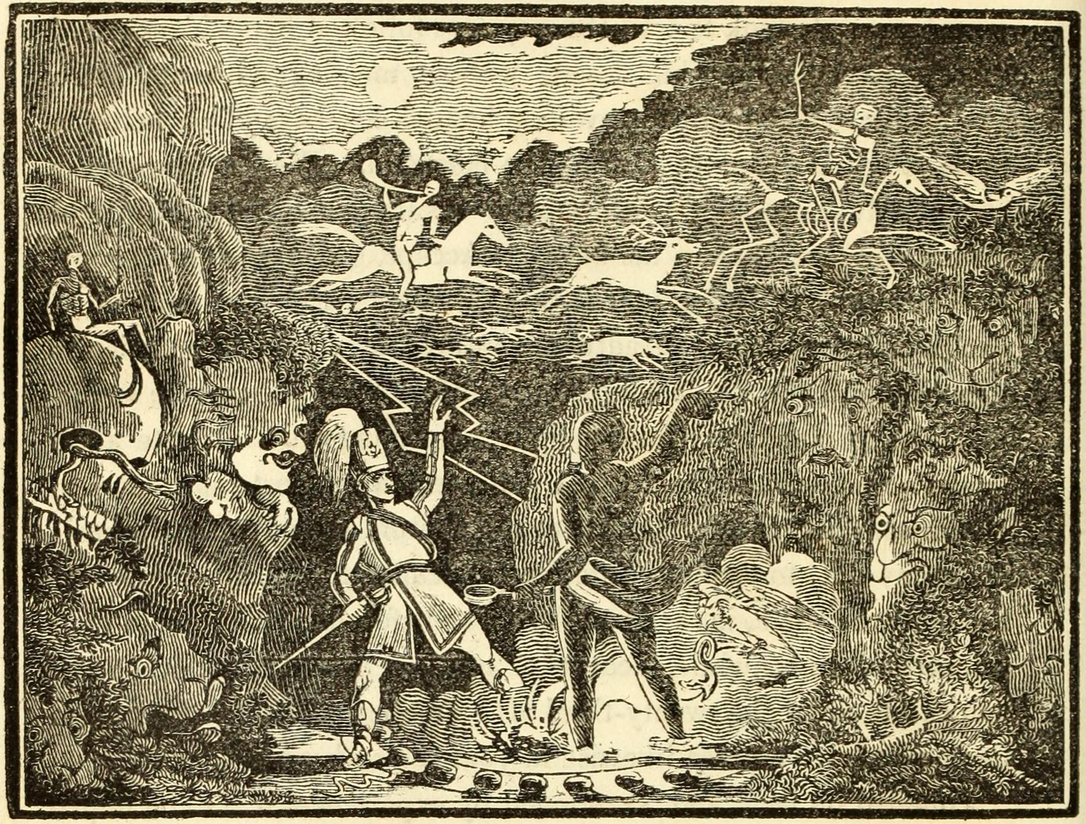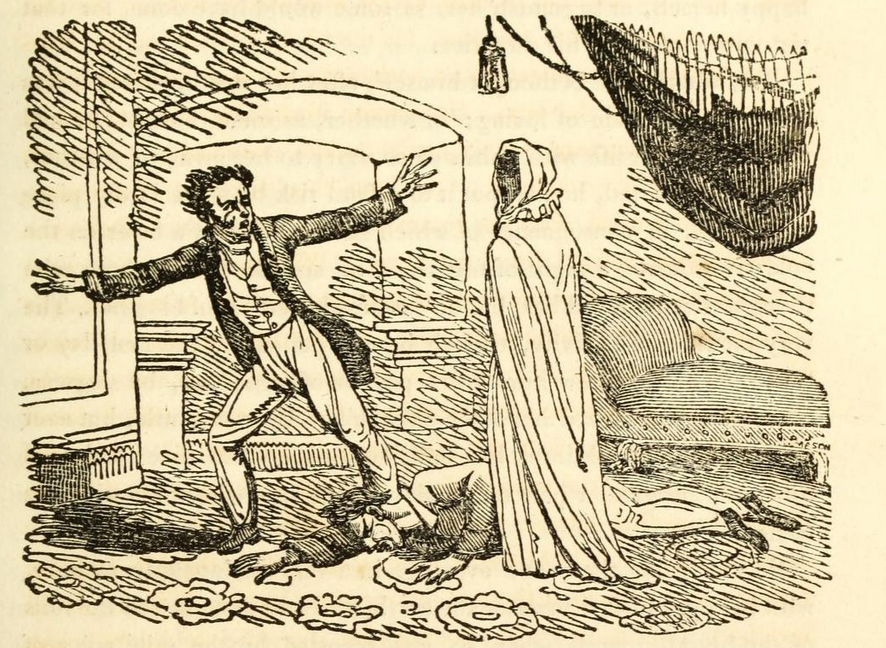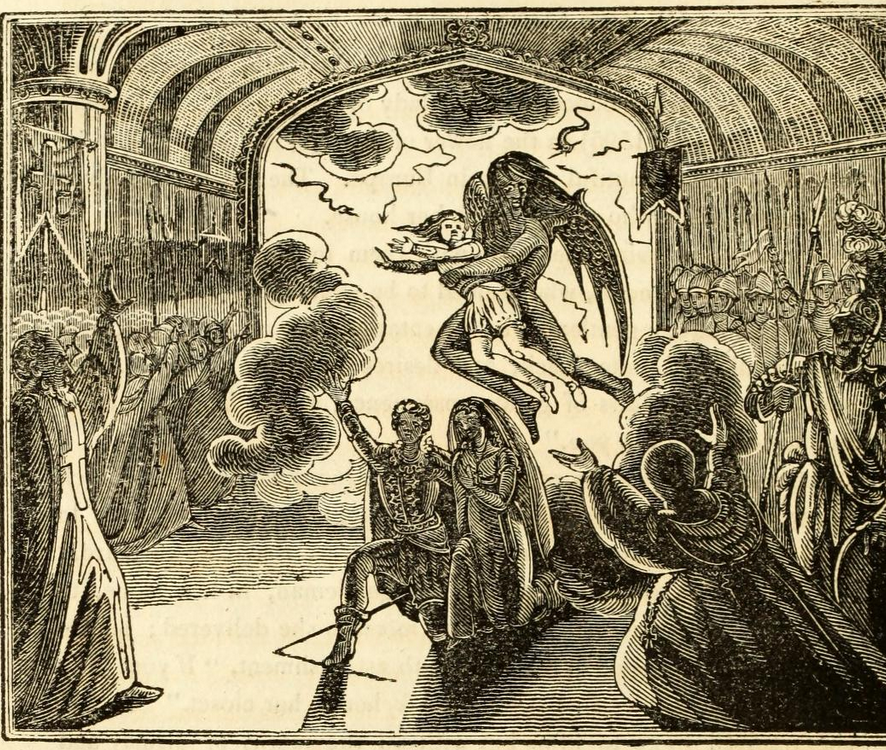In my previous post, I tracked down the origin of the story called "The Astrologer of the Nineteenth Century" in Henry St. Clair's anthology Tales of Terror/Evening Tales for the Winter. That search led me to St. Clair's source: a story entitled "The Necromancer" in the first section of the 1825 astrological tome The Astrologer of the Nineteenth Century. This first section was likely the first issue of a failed periodical called The Struggling Astrologer (1824), edited by English astrologer Robert Cross Smith.
As I mentioned in that last post, this first issue of The Struggling Astrologer is made up mostly of pieces that appear to be lifted from other literary and occult sources. This makes it rather like one of those Caedmon Records of spooky readings by Vincent Price. So of course, I had to track them down. And here they are! Try imagining Vincent Price's eerie voice as you read them.
The first story is "The Necromancer," the subject of my previous post.

Next is "Der Frieschutz," August Apel's tale from Volume One of Gestpensterbuch (Ghost Book). This is NOT the translation by Thomas De Quincey that appeared in Evening Tales for the Winter, Volume One. I think it may be a retelling of the story, or of the opera of the same name.
"Valmondi, or the Unhallowed Sepulchre" is a discussion of James T. Rodwell's play Valmondi, which is based on the novel Melmoth the Wanderer, by Charles Maturin. Valmondi opened at The Adelphi Theater in London on October 14, 1824, and ran until December 2 of that year. I couldn't find another source for this article, so it's possible that it is original to The Struggling Astrologer.

"Life in Death, or the Spectre Wife" is an excerpt from the essay "A Tale for a Chimney Corner" by Leigh Hunt, the English essayist, poet, and journalist (the story itself starts at the last paragraph of the first column of page 28). "A Tale for a Chimney Corner" first appeared in the weekly periodical The Indicator, which Hunt edited from 1819-1821.
"Invocation of Spirits, a Fragment" purports to be an appendix to John Dee's Conferences with Angels (MS 3677 Sloan Library, British Museum). It consists of entries from Dee's diaries covering October 16 to 23, 1585. They describe Dee's experiments with a scrying crystal and seal (likely this one, from the description).
I could not verify that these entries are authentic. This particular manuscript is not online (and judging from some other manuscripts, it would be fairly illegible if it were). I could not find these entries in Méric Casaubon's A true and faithful relation of what passed for many years between Dr. John Dee and Some Spirits, which should cover the portion of Dee's diaries that include the period in question. I also checked The Private Diary of Dr. John Dee, edited by James Orchard Halliwell. These diary entries skip right over 1585.

Nor could I find the text of these entries from any other source online earlier than The Astrologer of the Nineteenth Century. So, regardless of whether these are authentic writings of John Dee (they still could be), this could be the original appearance of this particular version of them.
"The Magic Dice" is a translation by Thomas de Quincey of Friedrich Laun's 1814 “Die Glückswürfel.” It appeared in The London Magazine, August 1823. It also appeared in Evening Tales for the Winter, Volume One, and I wrote about it here.
"Awful Apparition of the Chevalier de Saxe" is attributed to a T. M. Jarvis, Esq. However, it is actually from Memoirs of the courts of Berlin, Dresden, Warsaw, and Vienna, in the years 1777, 1778, and 1779, by Sir Nathaniel William Wraxall, published in 1799 (the story begins in the middle of page 276: "In the great gallery,...").
The story is an account of the supposed raising of the ghost of Johann Georg, Chevalier de Saxe by the German necromancer Johann Georg Schröpfer in Dresden, at the behest of Prince Charles of Saxony.
And finally, "The Midnight Storm" is by Sarah Elizabeth Utterson, included (as "The Storm") in her volume Tales of the Dead (1813), which is mostly her translation of Fantasmagoriana (1812), by Jean-Baptiste Benoît Eyriès.
Fantasmagoriana is in turn translations from the German of eight supernatural tales, mostly from Gespensterbuch. It is most famous for being the reading material of Mary Shelley and John Polidori during the rainy summer when they wrote, respectively, Frankenstein and The Vampyre. You can read more about Tales of the Dead at my post on Multo, here.
And that's it! The first issue of The Struggling Astrologer may not have been the most useful information for aspiring star-scryers, but it certainly provides an evening or two of entertainment for those who like classic gothic ghost stories and other supernatural readings. Enjoy!
Illustrations from The Astrologer of the Nineteenth Century. Source: Internet Archive